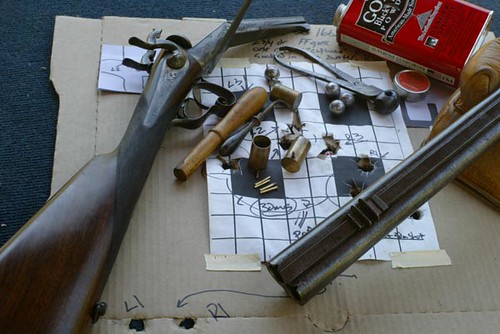| tinker |
| (.416 member) |
| 04/04/06 10:01 AM |

|
|
|
Something else to note about a peep sight, not many folks take this into consideration either, is that a peep sight greatly extends the depth of field of the human eye -- it dims the light seen while it's at it too.
Just like a camera lens' aperture iris, the smaller the aperture of the peep sight, the greater the depth of field, and the dimmer the sight picture.
What all that means is this -- with a shallow depth of field, as with our naked eye, we can only focus on something close *or* something far away. With a deep depth of field, we can focus on things which are close *and* far away at the same time. We can get a similar effect simply by squinting really hard too.
That deep depth of field is a great thing for us when we're looking down range at game or a target. With a crisp focus on the front sight and the target at the same time, we can more precicely place the top edge of that front sight *right on* the place we want to put a bullet hole. The disadvantage there is that in dim light like dawn or dusk, the peep sight can be somewhat of a disadvantage in that it takes away some of the available light from our sight picture. There is that trade-off.
All of that --and-- the aperture in the peep sight does very well to 'automatically' center our eye over the sight line, just as noted above in other replies to this thread.
--Tinker